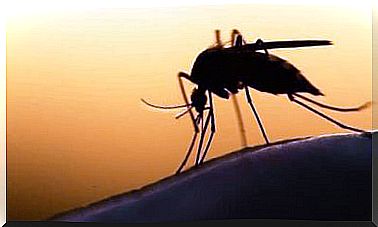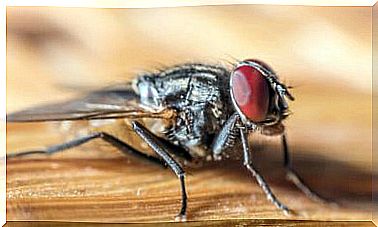The New Guinea Singing Dog Is Not Extinct
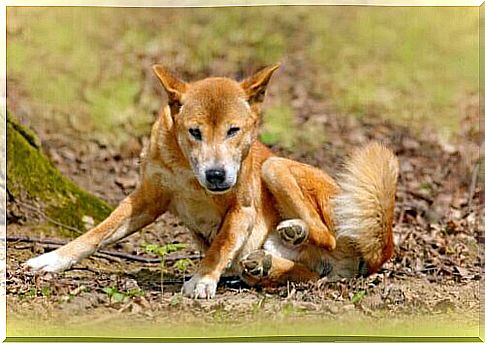
For decades we have been hearing about curious animals that have become extinct, as was the case (until now) with the New Guinea singing dog. Fortunately, news came in September 2020 that this species is not extinct, contrary to what was previously thought.
Do you know any information regarding the singing dog? Do you know how he managed to save himself from extinction? If the answer is no, there is no problem. In the following lines we will talk about this peculiar animal and the talent it is gifted with.
The New Guinea singing dog resists
According to a news published on September 3, 2020, the New Guinea singing dog has been found. We are facing an event of enormous importance, from the ecosystem point of view, since it was believed that this species was extinct in nature since the beginning of the 20th century.
However, sources report that some wild specimens of this dog breed were spotted in 2016, within their habitat. Specifically, 15 individuals have been identified in Western New Guinea, Indonesia.
This is great news for other descendants of this species in zoos or conservation centers, since the discovery of new wild specimens is able to stop the endogamy of those found in captivity.
Nevertheless, it was necessary to carry out a second expedition, in 2018, to carry out the collection of biological samples of these animals. The goal was to analyze the animals from a genetic point of view and verify that the sighted species really corresponded to the taxonomic group of the singing dog.
Even if the answer was yes, it is important to point out that the genome of these specimens coincides only 70% with that of the original wild species. Experts suspect this phenomenon is due to a cross with eight types of US dogs, which occurred over several generations.
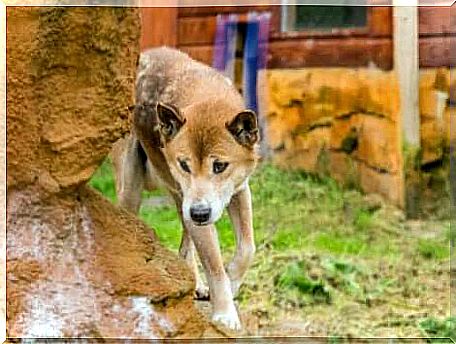
In addition, the 2018 expedition made it possible to draw up a report regarding the physiological measurements of the dogs. Thanks to this continuous monitoring, the researchers were able to obtain information on the health and body conditions of wild specimens.
The task of the experts, however, did not end here, since the latter have equipped two animals with GPS locators, in order to know their movements and habits. Naturally, the monitoring of these wild animals has proved essential, in every sense, to avoid their further disappearance.
Thanks to the research, the hope is that it will be possible to give birth to a true population of New Guinea singing dogs. Thanks to the administration of care and the application of relevant measures, it is hoped to be able to ensure the presence, within a few years, of this exotic animal (accompanied by its characteristic sound) in its natural environment.
Curiosities about the New Guinea singing dog
Now that we have reported the news, it seems fair to present some characteristics typical of this fascinating canid.
Origins
The New Guinea singing dog is known by the scientific name of Canis lupus hallstromi or Canis familiaris hallstromi . As its common name indicates, this canid is native to New Guinea.
Specifically, this canid is present in the western part of New Guinea, which belongs to Indonesia. This part takes the name of Papua and the first time in which the presence of specimens of this species has been documented in writing dates back to 1897.
The discovery of individuals of this species is a source of joy for the population of the island, since it was feared that the New Guinea singing dog breed was now extinct, due to the following causes:
- Loss of habitat.
- Crosses with the wild dogs of the villages.
Regarding their phylogenetic positioning, these dogs appear to be related to the dingo. Which means that, on an evolutionary level, they appeared on the tree of life earlier than current dogs.
Knowing the characteristics of these more “ancestral” species is a way to be able to complete the current knowledge on the ancient precursors of domestic dogs and, consequently, of the different breeds of dogs that now live in homes all over the world.
Behavior
After their habits were studied, it was concluded that these dogs are extremely intelligent, since they have been able to adapt to the changes their habitat has undergone over the decades.
Another striking feature of this animal is its predilection for high places: in fact, it has good climbing skills. Also, it is curious to know that these dogs perform a specific head movement to communicate with each other.
For this purpose, they do not limit themselves to using their own heads: in fact, their long, curved and highly mobile tails also intervene in communication. Thanks also to their fur and their appearance, they are able to recognize each other at great distances.
Do they really sing?
Since this animal is known as the New Guinea singing dog, it is good to explain what the origin of its nickname is. The howl of this dog is similar to that of wolves, but it has a unique characteristic.
Its authenticity lies in this characteristic, because these dogs possess the ability to modulate their howl. By managing to control the pitch of their vocalizations, they seem to sing when they emit a howl.
That is why, as much as we tend to humanize the more conspicuous traits of some animals, we cannot take their denominations literally. Nevertheless, compared to the other members of the genus Canis , it is possible to say that this species emits a kind of song.
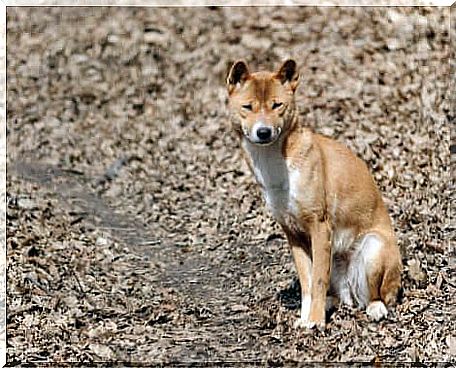
As we have seen, some animals that were thought to be extinct may not really be. This is the case with the New Guinea singing dog, which was considered to have disappeared from the mid-20th century.
Fortunately, nowadays it is still possible to find the presence of genetically stable populations of this species in nature. Now it is up to us to act and prevent its disappearance.

